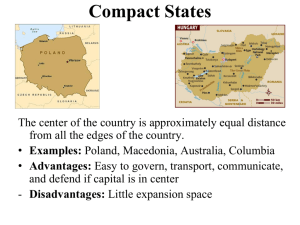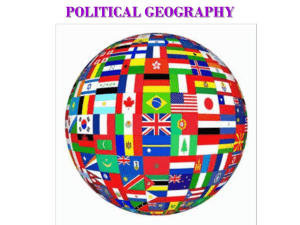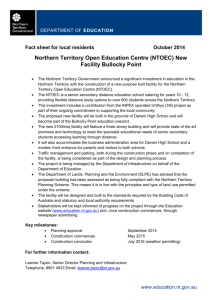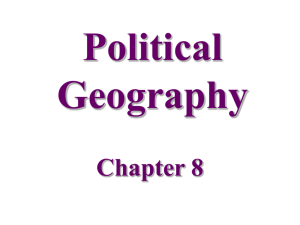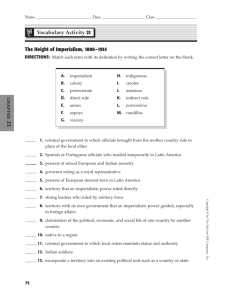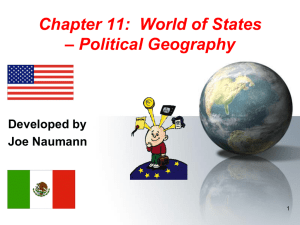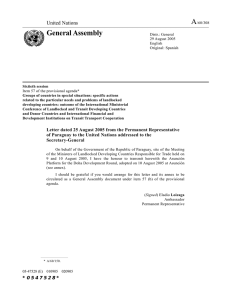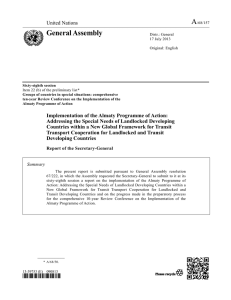Geographic Characteristics of States
advertisement
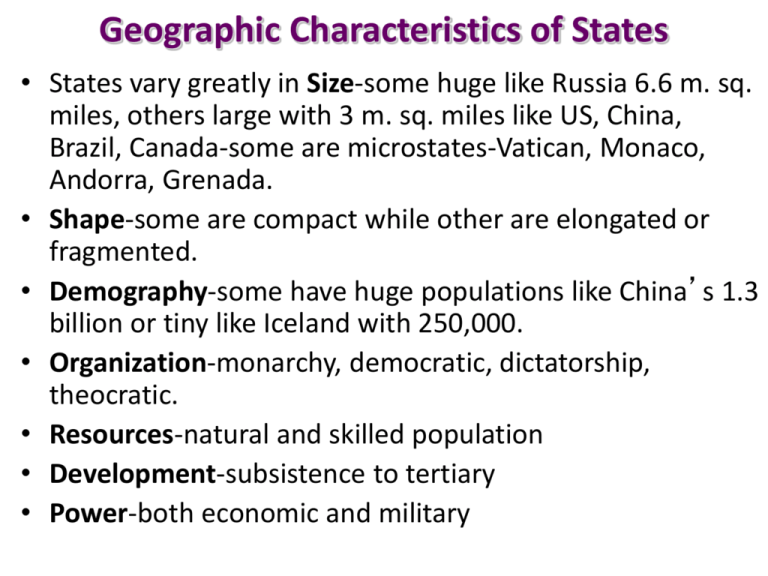
Geographic Characteristics of States • States vary greatly in Size-some huge like Russia 6.6 m. sq. miles, others large with 3 m. sq. miles like US, China, Brazil, Canada-some are microstates-Vatican, Monaco, Andorra, Grenada. • Shape-some are compact while other are elongated or fragmented. • Demography-some have huge populations like China’s 1.3 billion or tiny like Iceland with 250,000. • Organization-monarchy, democratic, dictatorship, theocratic. • Resources-natural and skilled population • Development-subsistence to tertiary • Power-both economic and military Stateless Nations • Sovereignty-complete control over a territory’s political & military affairs. Some nations do not have their own state-this can lead to conflict. • Palestinians are the most well known example-a stateless nation in conflict with Israel over territory. • Kurds-about 20 million people live in Kurdistan-which covers 6 states-since the 1991 Iraq WarKurdish Security Zone has been virtually independent. • Territoriality – “the attempt by an individual or group to affect, influence, or control people, phenomena, and relationships, by delimiting and asserting control over a geographic area.” – Robert Sack • Sovereignty – having the last say over a territory – legally. • Territorial Integrity – a government has the right to keep the borders and territory of a state in tact and free from attack. Territory • Territorial Morphologyshape, size & relative location of a state. • Compact-distance from the geographic center does not vary greatly. • Fragmented-consisting of 2 or more separate pieces divided by water or other territory. • Elongated-long & thin states. Territory • Prorupted-states that are nearly compact, but have a narrow extension. • Perforated-having another state lie within ones territory. • Exclave-an outlier of a state located within another. • Enclave-the counterpart of exclave-it lies within a country and is independent or ruled by another country. India: The Tin Bigha Corridor Fig. 8-7: The Tin Bigha corridor fragmented two sections of the country of Bangladesh. When it was leased to Bangladesh, a section of India was fragmented. Landlocked Countries • Landlocked states have a serious disadvantage in trade and access to resources. • Africa has more landlocked states than any other continent. Sahel is poorly linked to the coastal ports; Uganda linked by rail; Zimbabwe access via South African and Mozambique ports; Rwanda & Burundi the world’s most isolated states; Zambia & Malawi have poor connections. • Asia-Mongolia & Nepal are landlocked with rough terrain, great distances and limited communication, Afghanistan, Kazakhstan, Azerbaijan, Armenia & Georgia. • South America-Bolivia and Paraguay-lost coastline in war • Europe-Austria, Switzerland, Czech Republic, Slovakia, Moldova, Belarus and Bosnia Landlocked States African States Fig. 8-6: Southern, central, and eastern Africa include states that are compact, elongated, prorupted, fragmented, and perforated.

